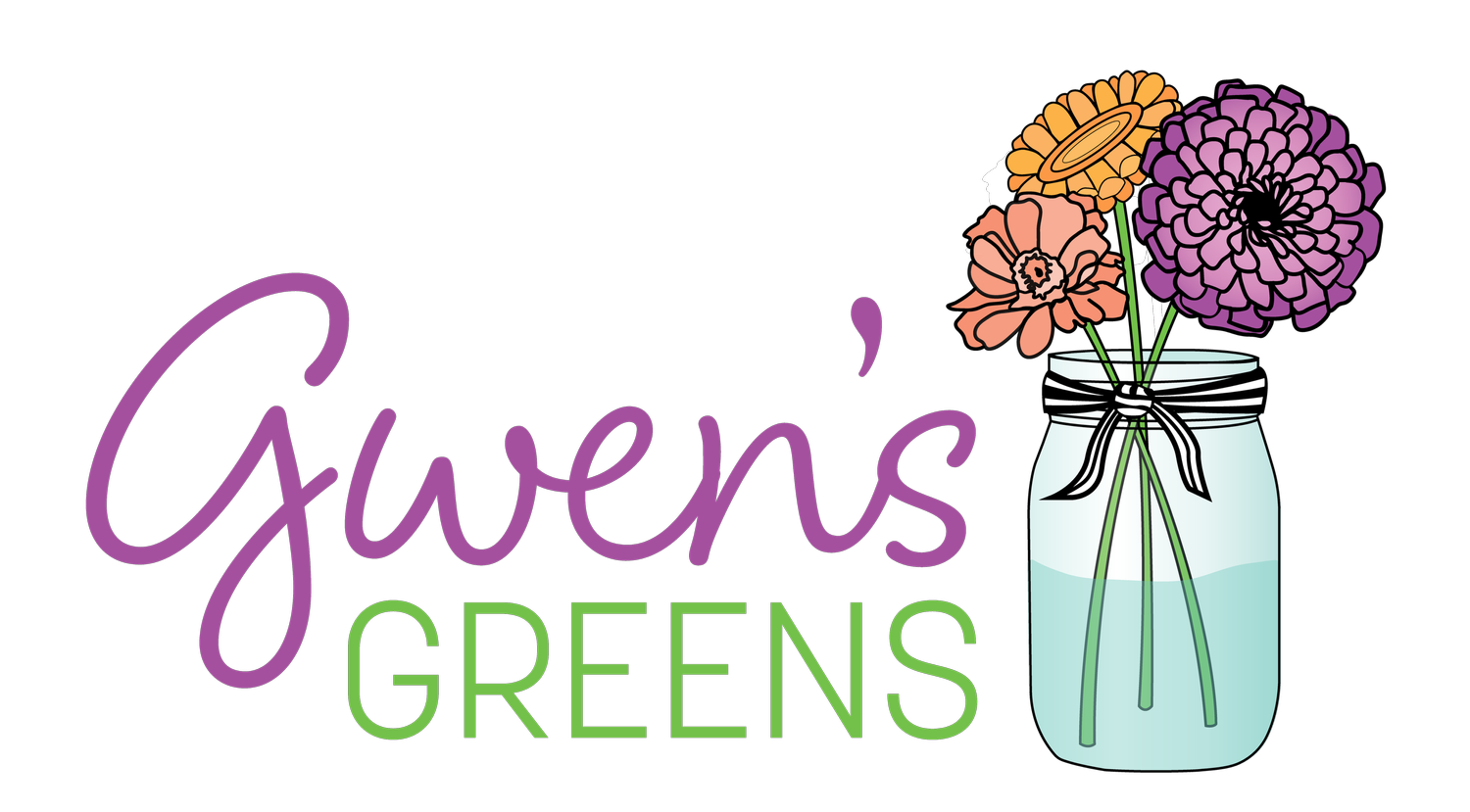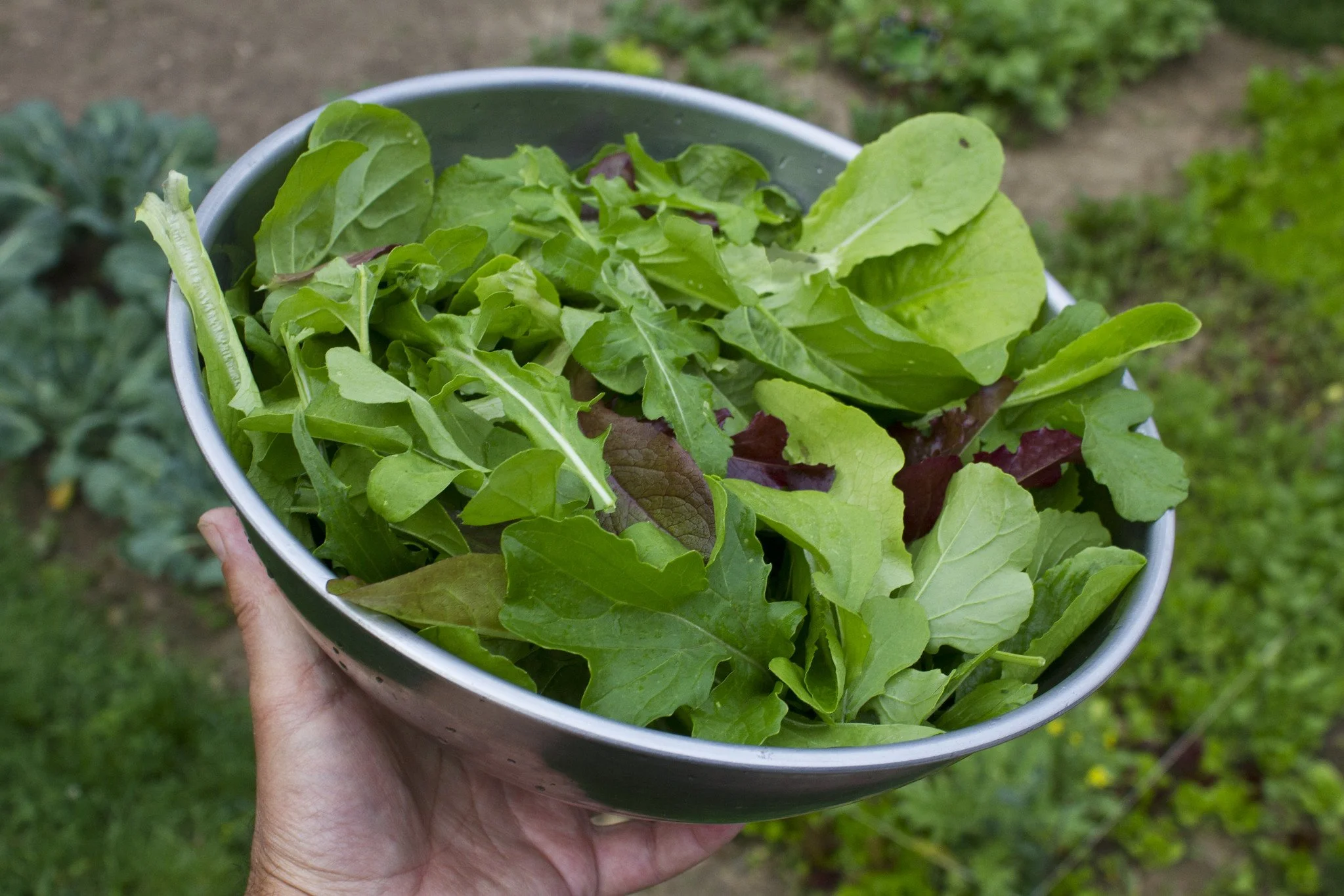Are you in a 3-green rut?
A few years ago I purchased a book by Jenn Louis, titled The Book Of Greens. I wanted to know how to use those green leaves that are supposed to be so good for you. Jenn is a chef, and she has put together descriptions, beautiful pictures, and over 150 recipes using a variety of “greens.” She wrote the book to “deliver us from the ‘three-green-rut’ of cabbage, kale, and lettuce! That piqued my interest! Because I was definitely in that rut.
What’s kinda funny, is that we pull “greens” from our yard, cracks in the cement, and even spray those pesky things a few times every summer. I’m not a practicing greens-eater-extrordinaire, but did you know that dandelion leaves, Puslane (I consider that a weed in my flower garden), and Nettles can be eaten for their rich nutrients? Nettles! Those pricky plants that leave your fingers stinging.
Here are the greens we grow, (alphabetically) and something you should know about each:
Arugula
From ancient Rome, arugula leaves were used as an aphrodisiac. The flavor is strong, pungent and peppery. It should show up in more dishes than just salad! We add it to soups and pasta sauces. There’s a fabulous trending recipe for arugula chips, and a refreshing arugula-watermelon salad.
*Vitamins A, B, C, K; potassium; zinc; copper; iron; calcium; phosphorus; manganese; protein/ dietary fiber.
Bok Choy
You have likely eaten bok choy if you’ve been to a Chinese restaurant. Bok Choy means “vegetable’” in Chinese. It has a clean, sometimes sweet, crunchy flavor. Baby bok choy is ideal for a salad mix, with its tender leaves and stems. It is known as a “supremely healthy food!”
We like to add it to stir-fry, salads, and vegetable soup.
*Vitamins A, C; potassium; beta-carotene; immune boosting properties
Chard
Chard has two great uses — the sturdy and nutrient-rich leaves, and the crunchy sweet stems! You can find chard in white, pink, and yellow. It’s a beautiful green that can be used as a “plate” under chicken or potato salad. Some people chop the stems and saute them in butter or stock for a tasty side dish. If chard seems limp when you get it in your box, simply refresh it by putting it in ice water for 10-15 minutes. Drain and dry and spin or pat dry.
*Vitamins A, B, C, E, K, magnesium, manganese, iron, potassium, dietary fiber, calcium…..oh my…..too many good things to list here!
Kale
Kale originated from cabbage —- and some trace it’s roots to civilization before the the Romans and Greeks. It’s a vegetable that grows in cold weather, and has become a staple in most of Europe. We find it in our grocery stores, chop it, massage it with oil, and add it to salads. Ever heard of a “kailyard?” Kale once grew so abundantly in the Highlands that Scottish authors who wrote about rural life were given that name!
*Vitamins A, B, C, E, K; calcium; potassium; manganese; iron; phosphorus; fiber.
Mustard Greens
Mustard greens taste like mustard! Some have called them ‘the wasabi of salad greens.’ I once planted mustard greens thinking it was a frilly lettuce. The first bite of my salad was WOW! Mustard has been around for about 5,000 years, and in the Southern U.S., they are as much of a staple as collards. Grow mustard for the seeds or add the leaves to any dish that needs a kick.
*Vitamins A, B, C, E, K, calcium; copper; mangnese; phosphorus; dietary fiber.
Spinach
Spinach gets a bad rap — because several American generations ate it from a can. Fresh from the garden, or the produce section of a grocery store, spinach is a tender sweet green full of nutrients. Eat spinach every day! Popeye made it famous.
*Vitamins A, B, C, K, iron; potassium,; calcium.

